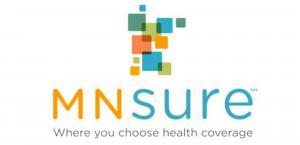Minnesota: Extending Premium Subsidies Can Help Keep Minnesota’s Uninsured Rate at Historic Low

ST. PAUL, Minn.—New data released by the Minnesota Department of Health shows actions taken by state officials and the Biden administration helped drop the state’s uninsured rate in 2021 to 4.0%, the lowest level ever measured.
“The Minnesota Heath Access Survey shows that more Minnesota families have been able to access and maintain their health insurance during this critical time,” said MNsure CEO Nate Clark. “Minnesota has been able to reduce the uninsured rate thanks in part to targeted, effective policies, including the expansion of premium tax credits that lower the cost of monthly premiums for private health plans available through MNsure.”
The 2021 federal American Rescue Plan (ARP) relief package expanded access to subsidies to those who were ineligible previously and lowered costs for tens of thousands of Minnesotans who purchase health insurance through MNsure, the state’s health insurance marketplace. The cost savings drove a record number of sign-ups for MNsure as over 134,000 Minnesotans signed up for 2022 health coverage – a 10% increase from last year. The enhanced benefits made available through the ARP are set to expire at the end of 2022 unless the U.S. Congress acts to extend them.
“To keep Minnesota’s uninsured rate at this historic low and to help address the racial disparities in health coverage in our state, Congress must act to extend these cost-saving benefits,” said Clark. “Failure to act could increase out-of-pocket costs for thousands of Minnesotans and push some to drop their coverage entirely.”
MNsure estimates that without congressional action to extend the benefits, about 70,000 Minnesotans who currently access premium tax credits through the marketplace will see higher out-of-pocket costs when the new plan year starts in January 2023. Over 10,500 individuals are estimated to lose access to all of their current financial help.
Without an extension, MNsure estimates that net premium spending across the state may increase by 30% to 40%, or an average of $1,314 per year for those receiving premium tax credits. Some regions could see even bigger increases. The average increase for Minnesotans in southern Minnesota – from Worthington to Rochester – could see an increase of about $1,500 per year without an extension. Northeastern Minnesota families could see increases of about $1,470 per year.
How to support my healthcare wonkery:
1. Donate via ActBlue or PayPal
2. Subscribe via Substack.
3. Subscribe via Patreon.



